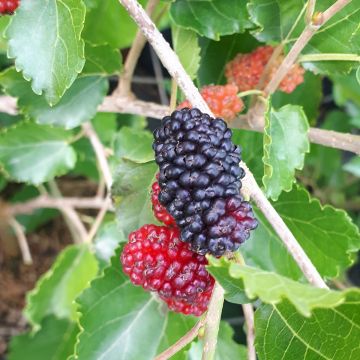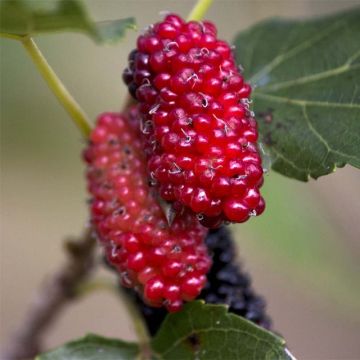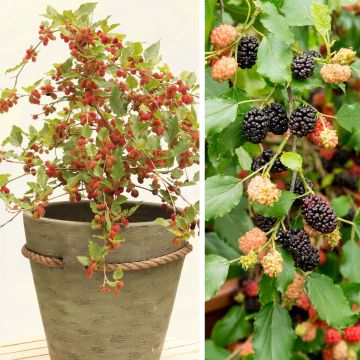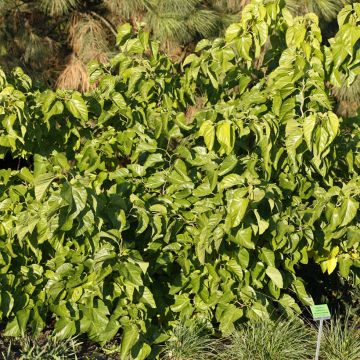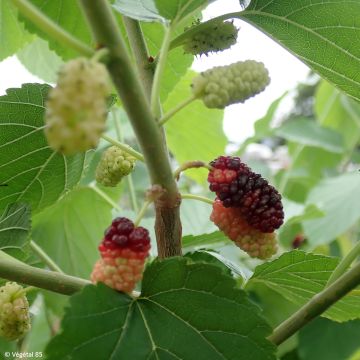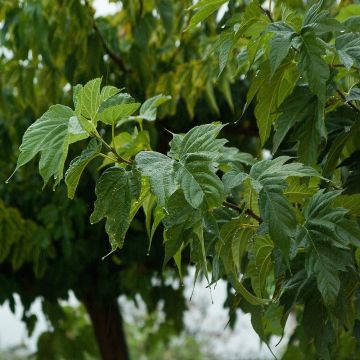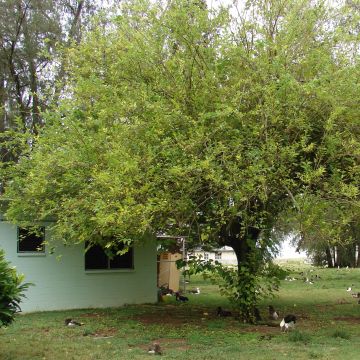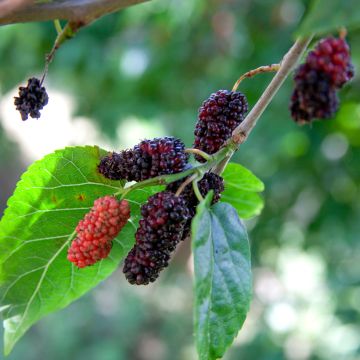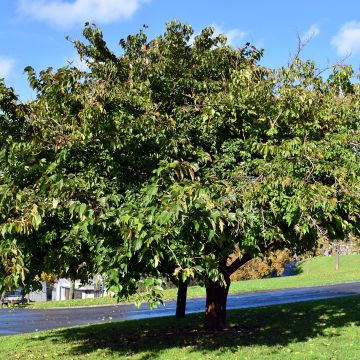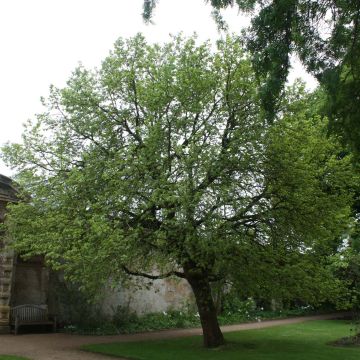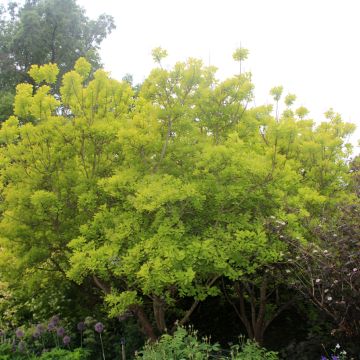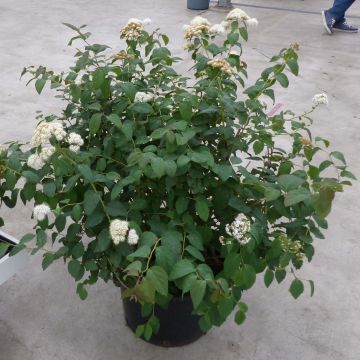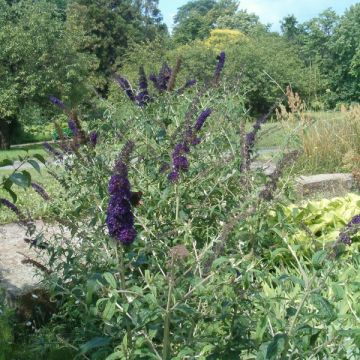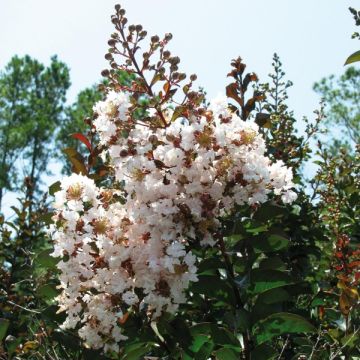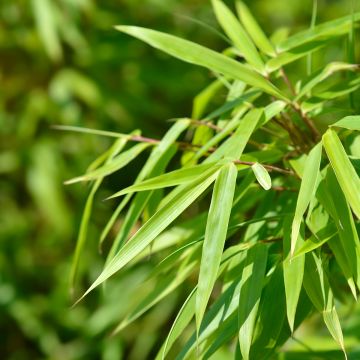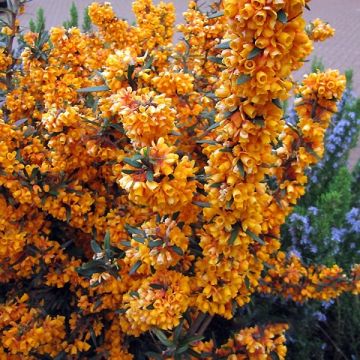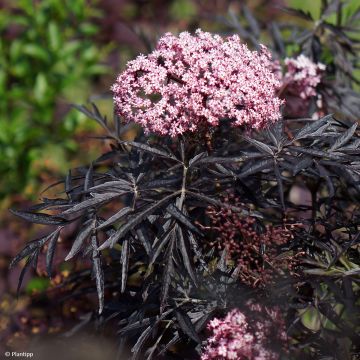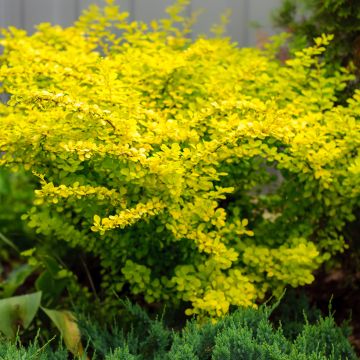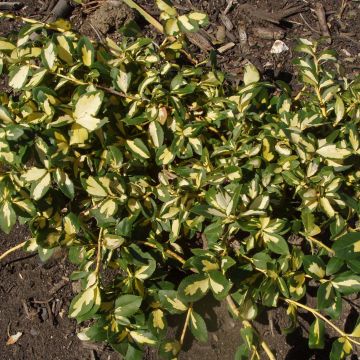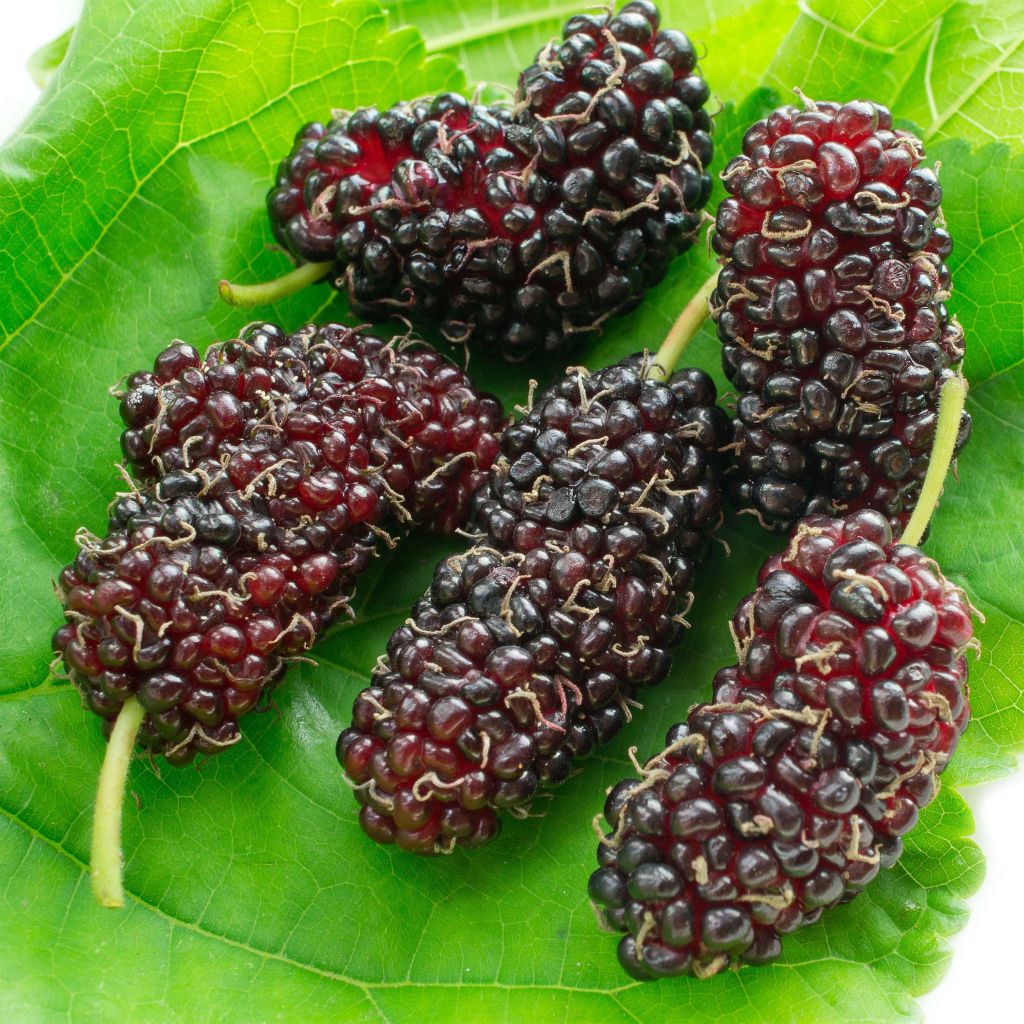

Morus acidosa Mulle - Mullberry
Morus acidosa Mulle - Mullberry
Morus acidosa Mulle
Korean Mulberry
This item cannot be shipped to the selected country
Delivery charge from €5.90
Delivery to Corse prohibited
More information
Schedule delivery date,
and select date in basket
This plant carries a 24 months recovery warranty
More information
We guarantee the quality of our plants for a full growing cycle, and will replace at our expense any plant that fails to recover under normal climatic and planting conditions.
From €5.90 for pickup delivery and €6.90 for home delivery
Express home delivery from €8.90.
Delivery to Corse prohibited: UE law prohibits the import of this plant from mainland France to Corse as part of the fight against Xylella fastidiosa. Please accept our sincere apologies.
More information

Does this plant fit my garden?
Set up your Plantfit profile →
Description
Morus acidosa 'Mulle' is a compact and fruitful selection of a Korean mulberry also known as Morus australis. It is highly cold-resistant. This small tree is particularly suitable for cold regions where it abundantly and regularly bears fruit from July to September. Appreciated for its edible, tasty, and sweet fruits, which resemble large elongated blackberries, it also offers ornamental foliage. Its beautiful light green leaves turn golden yellow in autumn before falling. Its modest stature and good tolerance to pruning make it a perfect candidate for small spaces. Adopt this mulberry tree in your garden or in a large container, but preferably place it a little away from the patio as its fruits can stain!
'Mulle' was selected in Sweden. Like all its counterparts (there are about 15 species of Morus), it belongs to the Moraceae family and produces latex in its tissues. Its ancestor's origins are found in East and Southeast Asia, particularly in Korea. 'Mulle' has the advantage of having a compact growth rate and a more upright habit than the typical species.
This small tree has a short and thick trunk, supporting a fairly narrow and tall crown. Its branches, inclined at 30 degrees, branch out quite low. Its growth is quite fast during the first few years, then slows down significantly. It can reach 4m (13ft) in height and 2.5m (8ft) in spread (compared to 12m (39ft) in height for the typical species). Its bark is a dull grey-green to reddish-brown; on older subjects it takes on a dark brown-orange hue. The bark of young branches is villous. The leaves are polymorphous, meaning their appearance and size can differ depending on their position on the branches and the age of the branch. They measure 6 to 8cm (2 to 3in) in diameter, 10 to 20cm (4 to 8in) in length, and are alternate, petiolate, either entire and cordiform, or divided into 3 to 7 more or less deep lobes and have a roughly toothed margin. The lamina is rough and fairly light green on the upper side, pubescent on the underside. It turns golden yellow in autumn before falling. 'Mulle' develops insignificant male or female flowers in different locations on the same plant in April-May. The harvest period is quite long. From July to September, the female flowers produce fleshy ovoid fruits, 3cm (1in) long, which are mostly almost black when ripe (sometimes red). The fruit is edible and juicy, with an acidulous flavour comparable to that of black mulberry fruits (Morus nigra). They are highly coveted by birds. The root system of this small tree does not appreciate transplantations: choose its location carefully!
'Mulle' is very hardy and not very space-consuming. It marks the garden with its unique personality and delights both young and old gourmets, while being truly undemanding in terms of the soil it is planted in, as long as it is properly drained. Uncultivated lands will benefit from its presence, as its leaves gradually enrich the soil every autumn. It can be welcomed in a small garden, for example in a small fruit hedge, alongside Japanese quince 'Cido', medlars, golden fig, Amelanchier ovalis, hazelnut trees, and cornus, for the great joy of children and birds. The fruits can be consumed fresh, in jellies, jams, or syrups.
Report an error about the product description
Morus acidosa Mulle - Mullberry in pictures


Plant habit
Flowering
Foliage
Botanical data
Morus
acidosa
Mulle
Moraceae
Korean Mulberry
Southeast Asia
Other Morus - Mulberry
Planting and care
Plant in spring or autumn in well-drained, rather fertile and deep, ordinary soil, in full sun. It tolerates the presence of limestone in the soil very well. Be careful not to damage its fleshy and brittle roots during planting. It tolerates cold. It tolerates hot and dry summers once well established. Prune in winter, if necessary. Note that an unpruned tree will naturally have a balanced habit, while pruning promotes a more anarchic branching. It may be subject to rust, canker or powdery mildew.
Planting period
Intended location
Care
-
, onOrder confirmed
Reply from on Promesse de fleurs
Hedge shrubs
Haven't found what you were looking for?
Hardiness is the lowest winter temperature a plant can endure without suffering serious damage or even dying. However, hardiness is affected by location (a sheltered area, such as a patio), protection (winter cover) and soil type (hardiness is improved by well-drained soil).

Photo Sharing Terms & Conditions
In order to encourage gardeners to interact and share their experiences, Promesse de fleurs offers various media enabling content to be uploaded onto its Site - in particular via the ‘Photo sharing’ module.
The User agrees to refrain from:
- Posting any content that is illegal, prejudicial, insulting, racist, inciteful to hatred, revisionist, contrary to public decency, that infringes on privacy or on the privacy rights of third parties, in particular the publicity rights of persons and goods, intellectual property rights, or the right to privacy.
- Submitting content on behalf of a third party;
- Impersonate the identity of a third party and/or publish any personal information about a third party;
In general, the User undertakes to refrain from any unethical behaviour.
All Content (in particular text, comments, files, images, photos, videos, creative works, etc.), which may be subject to property or intellectual property rights, image or other private rights, shall remain the property of the User, subject to the limited rights granted by the terms of the licence granted by Promesse de fleurs as stated below. Users are at liberty to publish or not to publish such Content on the Site, notably via the ‘Photo Sharing’ facility, and accept that this Content shall be made public and freely accessible, notably on the Internet.
Users further acknowledge, undertake to have ,and guarantee that they hold all necessary rights and permissions to publish such material on the Site, in particular with regard to the legislation in force pertaining to any privacy, property, intellectual property, image, or contractual rights, or rights of any other nature. By publishing such Content on the Site, Users acknowledge accepting full liability as publishers of the Content within the meaning of the law, and grant Promesse de fleurs, free of charge, an inclusive, worldwide licence for the said Content for the entire duration of its publication, including all reproduction, representation, up/downloading, displaying, performing, transmission, and storage rights.
Users also grant permission for their name to be linked to the Content and accept that this link may not always be made available.
By engaging in posting material, Users consent to their Content becoming automatically accessible on the Internet, in particular on other sites and/or blogs and/or web pages of the Promesse de fleurs site, including in particular social pages and the Promesse de fleurs catalogue.
Users may secure the removal of entrusted content free of charge by issuing a simple request via our contact form.
The flowering period indicated on our website applies to countries and regions located in USDA zone 8 (France, the United Kingdom, Ireland, the Netherlands, etc.)
It will vary according to where you live:
- In zones 9 to 10 (Italy, Spain, Greece, etc.), flowering will occur about 2 to 4 weeks earlier.
- In zones 6 to 7 (Germany, Poland, Slovenia, and lower mountainous regions), flowering will be delayed by 2 to 3 weeks.
- In zone 5 (Central Europe, Scandinavia), blooming will be delayed by 3 to 5 weeks.
In temperate climates, pruning of spring-flowering shrubs (forsythia, spireas, etc.) should be done just after flowering.
Pruning of summer-flowering shrubs (Indian Lilac, Perovskia, etc.) can be done in winter or spring.
In cold regions as well as with frost-sensitive plants, avoid pruning too early when severe frosts may still occur.
The planting period indicated on our website applies to countries and regions located in USDA zone 8 (France, United Kingdom, Ireland, Netherlands).
It will vary according to where you live:
- In Mediterranean zones (Marseille, Madrid, Milan, etc.), autumn and winter are the best planting periods.
- In continental zones (Strasbourg, Munich, Vienna, etc.), delay planting by 2 to 3 weeks in spring and bring it forward by 2 to 4 weeks in autumn.
- In mountainous regions (the Alps, Pyrenees, Carpathians, etc.), it is best to plant in late spring (May-June) or late summer (August-September).
The harvesting period indicated on our website applies to countries and regions in USDA zone 8 (France, England, Ireland, the Netherlands).
In colder areas (Scandinavia, Poland, Austria...) fruit and vegetable harvests are likely to be delayed by 3-4 weeks.
In warmer areas (Italy, Spain, Greece, etc.), harvesting will probably take place earlier, depending on weather conditions.
The sowing periods indicated on our website apply to countries and regions within USDA Zone 8 (France, UK, Ireland, Netherlands).
In colder areas (Scandinavia, Poland, Austria...), delay any outdoor sowing by 3-4 weeks, or sow under glass.
In warmer climes (Italy, Spain, Greece, etc.), bring outdoor sowing forward by a few weeks.

































